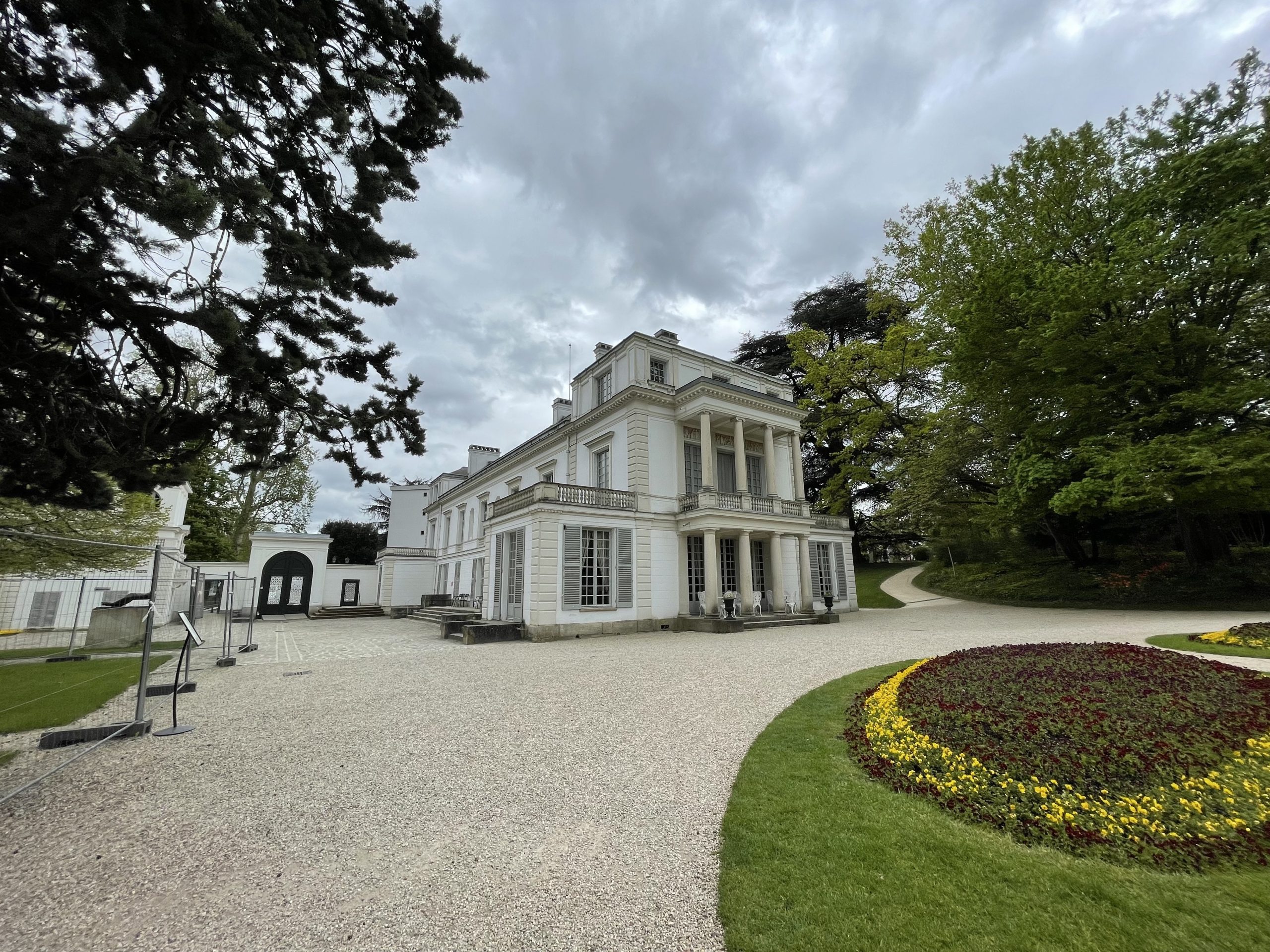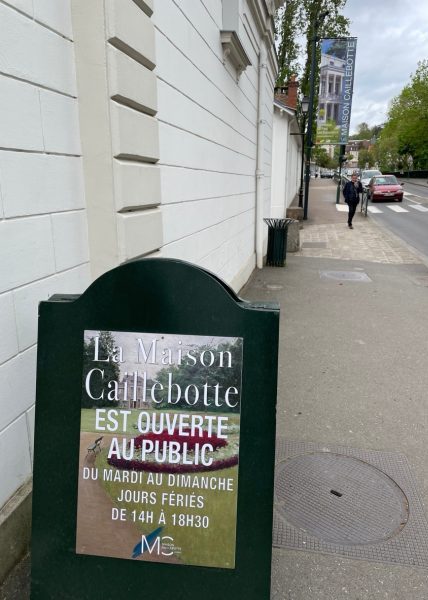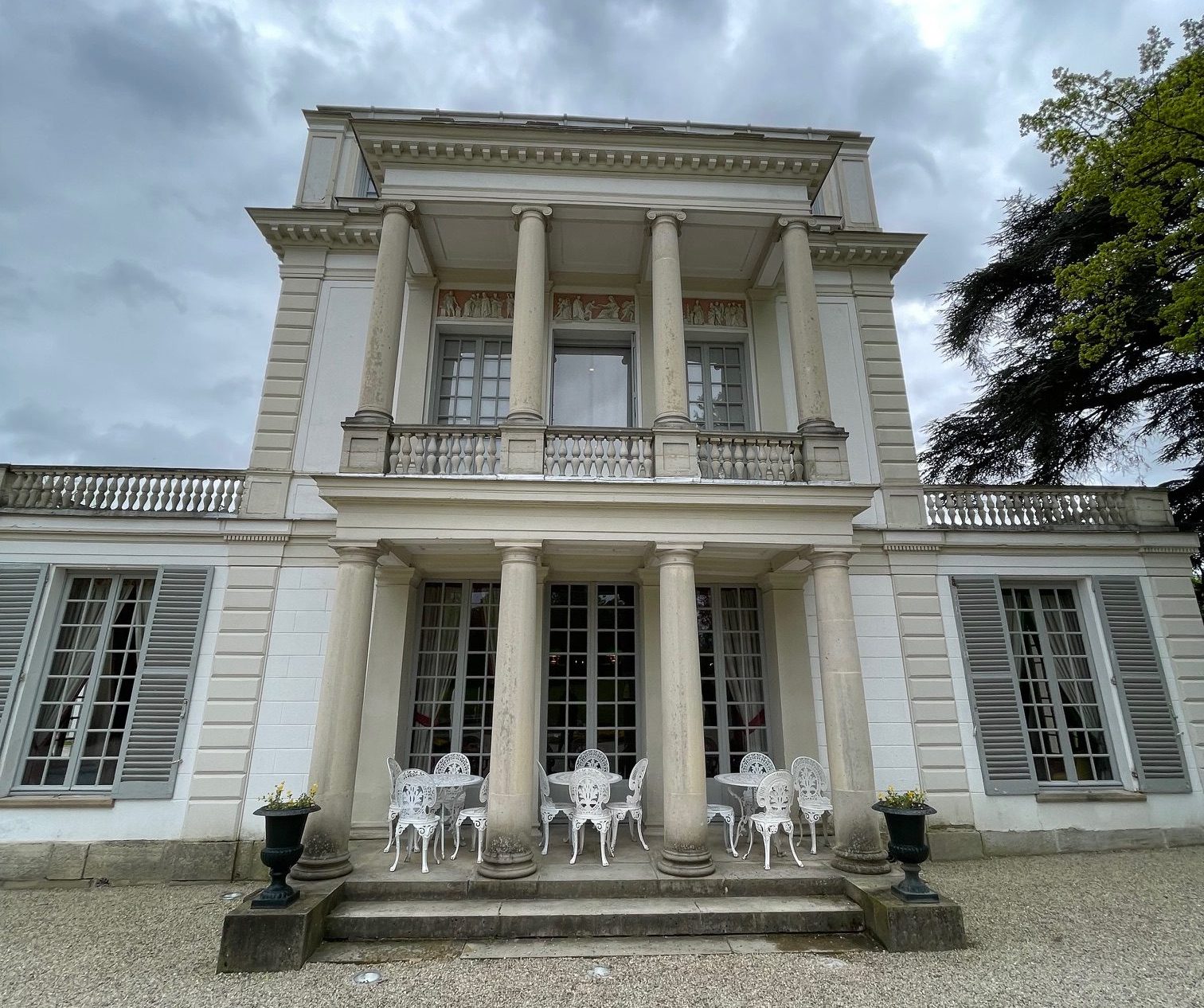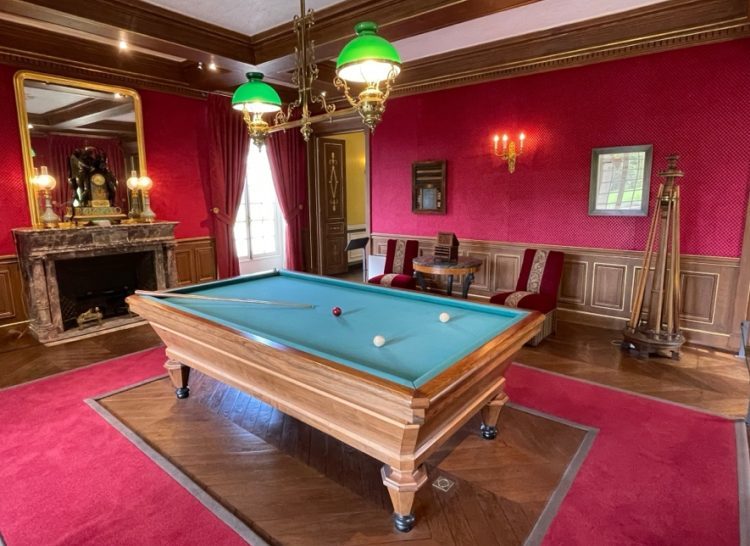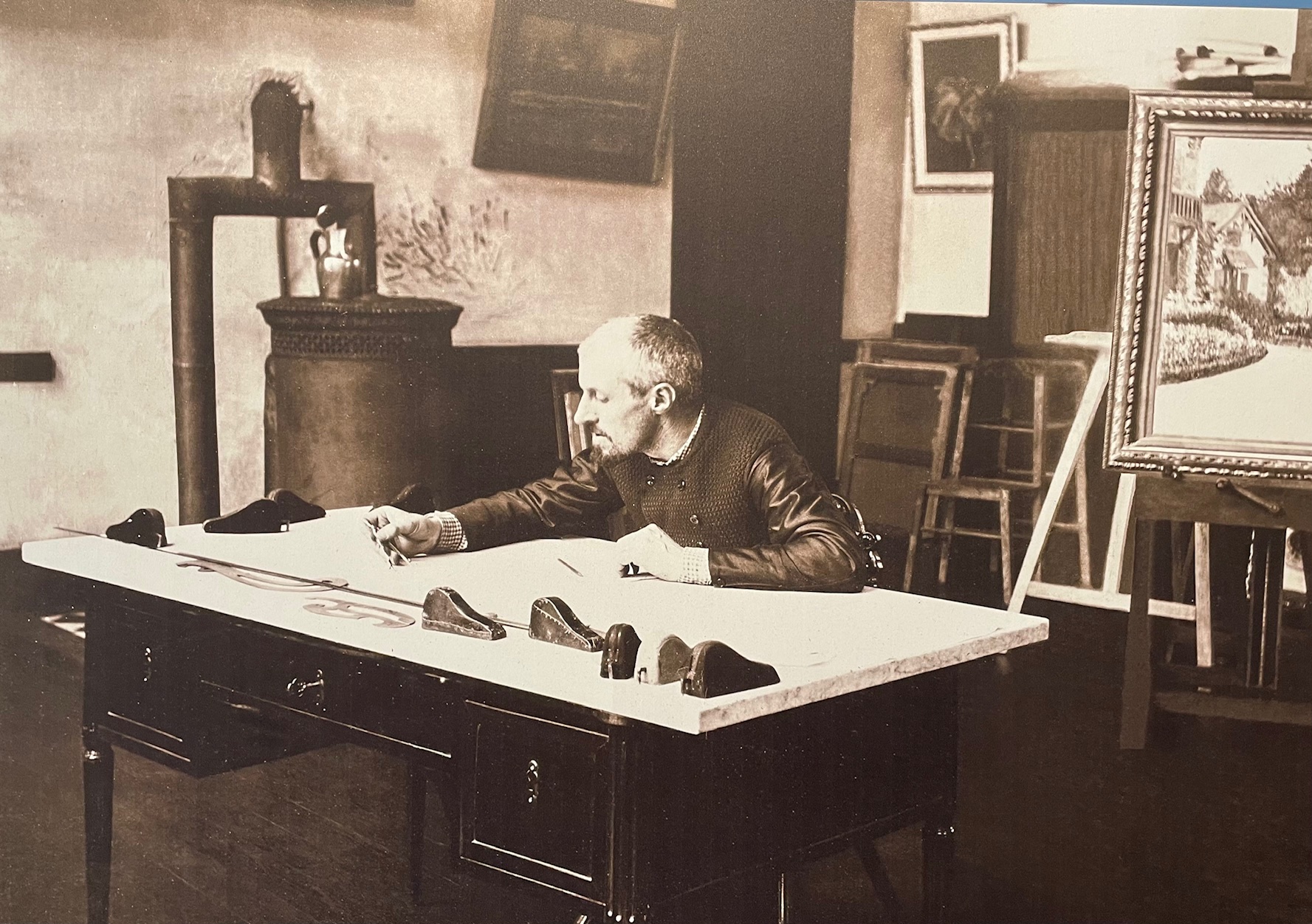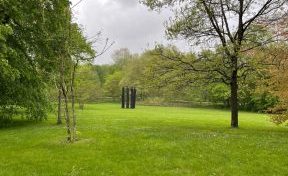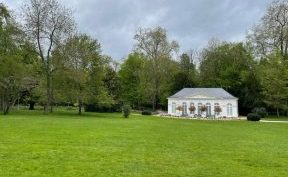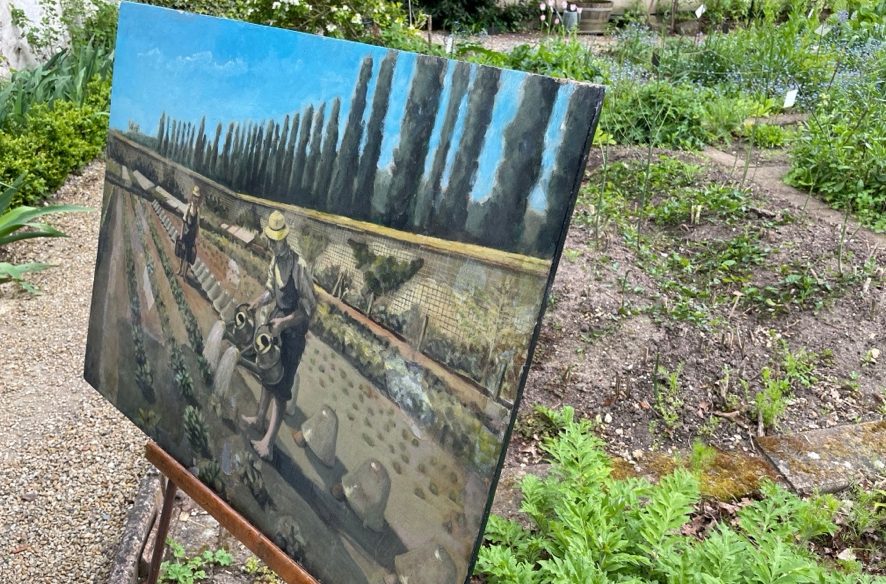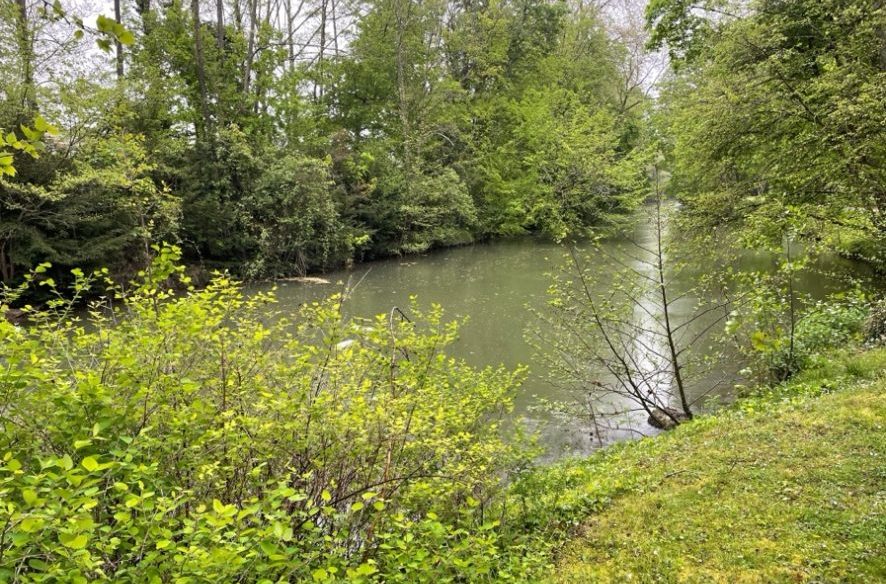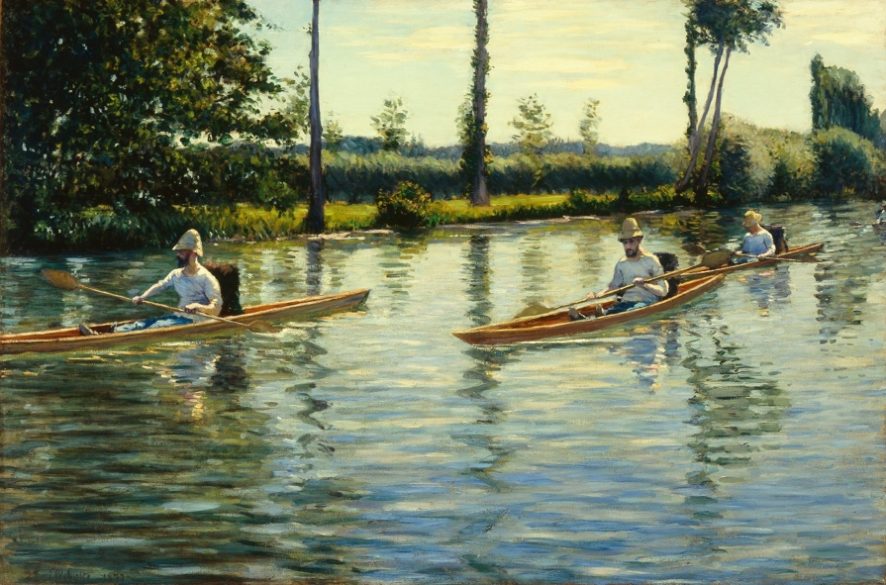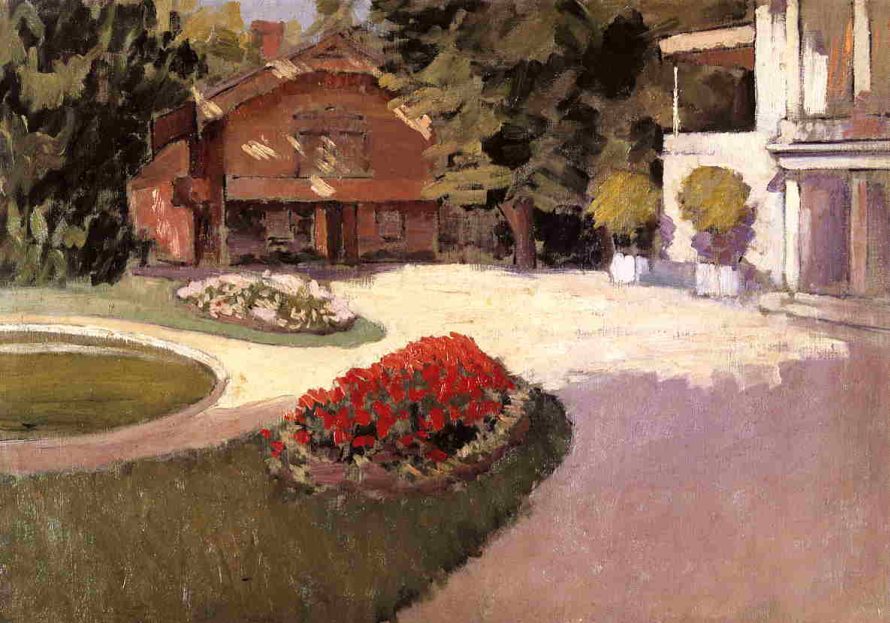Some call him the Greatest Impressionist You Never Heard Of.
Gustave Caillebotte (1848–1894) not only was friends with Claude Monet, Camille Pissarro, Pierre-Auguste Renoir, and others, but he painted and exhibited alongside these master artists. Maybe you’re familiar some of his more famous works, including “Floor Scrapers” (1875) and “Paris Street, Rainy Day” (1877). And yet, Caillebotte never enjoyed the spotlight that many of his fellow artists did. It’s only recently that the art world has taken notice of him at all.
The exciting news is that his family villa in the outskirts of Paris—often referred to as the “other Giverny”—has recently opened to the public after a 20-year renovation. Step inside La Maison Caillebotte to better get to know this enigmatic Impressionist, as well as learn about the life and times of the 19th-century Parisian bourgeoisie.
The House
First thought: This mansion on 27 acres—including a river running through it—is not the house of a starving artist! Clearly, Caillebotte came from money. Yes, he did, and he in fact used some of his family wealth to support less fortunate artists, including Monet, Renoir, and Alfred Sisley. He also bought their paintings, which later became a core of the Musée d’Orsay’s Impressionist collection. His wealth may be one reason why he didn’t garner more fame early on—he didn’t have to sell paintings to support himself, so he was never widely dispersed.
But back to the house. Pierre Budé, Lord of Villiers sur Marne and Yerres, purchased the fiefdom of Narelles in 1572 and set out to build one of the finest (and few) houses in the region. In today’s terms, it was a farming mansion, and it remained that way until the early 1800s, when Pierre-Frédéric Borrel, an illustrious chef who owned the lauded Rocher de Cancale restaurant in Paris, moved in. He turned the waning farming mansion into a sumptuous property in Palladian villa style—complete with Renaissance-style columns and an English-esque park. Perhaps he spent too much on the renovation, however, because eventually he went bankrupt. After a brief interlude with a new owner, who made few changes, the estate was purchased in 1860 by Martial Caillebotte, a successful linen merchant, a judge—and the father of Gustave.
Gustave was 12 years old at the time, and for the next 19 years, he and his family spent their summers here. He was highly educated and took an interest in art, photography, and gardening, and even as a child, he sketched scenes on the property. In all, he painted more than 80 canvases here, featuring landscapes, plants, and boats.
Today, twelve lavishly decorated rooms are filled with period furniture, so you get a sense of what a 19th-century bourgeoisie household would have looked like. Among them, several of the second-floor rooms (or first-floor, in European style) showcase the three Caillebotte brothers who grew up here: Gustave, the painter and boater; Martial Junior, the photographer; and Alfred, the priest.
Entrance Hall
Enter into the grand foyer, with its striking black-and-white flooring. Perhaps the most important thing here is the family tree, which helps trace some of the Caillebotte family history. Martial Caillebotte, the boys’ father was widowed twice (and had one son, Alfred) when he married Célèste Daufresne, the mother of Gustave and Martial.
Dining Room
The self-guided tour starts directly off the entrance hall in the elaborate dining room, with its polished oak paneling topped with panoramic murals, while the ceiling is painted with a large fresco depicting the sky. The magnificent Charles X–style table, set out with a fine Creil china service, could seat 36 guests. If you think it’s a little strange that the dining room is such a focal point of the house, remember it was a chef who conducted the major renovations, which the Caillebottes didn’t change.
Salon
The next room in a succession of rooms is the Living Room, or Salon. There’s a marble fireplace and large sofa, with a scattering of armchairs and other seating arrangements, making it easy to imagine light chatter among guests relaxing after lunch. Women especially spent time here, explaining the sewing cabinet on display.
Billiards Room
Men retreated after dinner to the next room over, the cherry-red Billiards Room, to play a required round of billiards. It’s also one of the few rooms in the house depicted by Caillebotte in a painting that, while unfinished, provides a good representation of the many interiors he produced in the first part of his career; it also helped historians re-create the furnishings of the room.
Music Room
Flanking the billiards room, you’ll find two smaller rooms. The one on the right was the games and music room. A painting by Caillebotte depicts his young cousin, Zoé, sitting in this room (and which helped re-create the modern-day version).
Second Floor
The self-guided tour heads upstairs, where several rooms have been converted to mini-museums that showcase each of the brothers who grew up in the house. In one room, a rotation of films examines Caillebotte and the Impressionists.
Gustave’s Room
In the first room, we meet Gustave head-on, with copies of two self-portraits. Panels divulge all kinds of interesting information about him, including his penchant for building boats. A self-taught architect, he drew up plans for his sailboats and had them built in his own workshop—boats that went on to triumph at international regattas. Of course, he painted them on canvas, too.
We learn more about his foray into painting as well. He trained as a lawyer and engineer, but, after fighting in the Franco-Prussian War between July 1870 and March 1871, went on to study art at the École des Beaux-Arts in Paris. As friends with the Impressionists, he picked up some of their new-fangled techniques, including painting outdoors and using a lighter palette and looser brushwork. That said, his artistic approach was truly a distinctive realist style, best known for its detailed depictions of urban Parisian life.
Martial Caillebotte’s Room
Gustave’s younger brother Martial (1853–1910) had lots of interests, including musical compositions, Rouen ceramics, and stamp collecting, but photography was his favorite—and he made a name for himself. There was a similarity between his photos and Gustave’s paintings, leading people to believe Gustave copied his brother’s compositions. Later on, it was surmised that it actually was the other way around—Martial was inspired by his brother’s works. But does it really matter?
Alfred Caillebotte’s Room
Alfred Caillebotte (1834–1896), the oldest child of Martial Caillebotte and Adèle Zoé Boissière, became a priest—the richest priest in Paris, it’s said, as his father gave him a portion of his inheritance when he entered seminary.
Empire Bedroom
The final room on this floor is the most splendid. It’s the parents’ room, though Caillebotte occupied it for a short time after his mother died in 1878. It’s filled with beautiful mahogany furniture—all original to the house.
Atelier
More stairs lead upstairs to the attic, where Caillebotte had his studio. There’s no furniture (or even dried-up palettes or tubes of paint that you find at most historic artist homes), but—even better—the museum often shows paintings here, typically featuring at least one or more Caillebottes. Even though it’s a small museum space, it has a museum-approved security system to display valuable paintings; there’s always something interesting on display.
The Park
Outside, you’ll find the property’s expansive park with the Yerres River running through it. There are pockets of flowers, big lawns, and lots of trees in the epitome of 19th-century landscape design. Everything here was made for discovery, including fun “follies” sprinkled about. Caillebotte found much inspiration here.
Kitchen Garden
Caillebotte immersed himself in gardening, and he had plenty of space to do that—18,000 square feet in the walled garden alone, for starteres. As a child, he spent time with the five gardeners working here, learning about the plants. Several of his paintings depict this passion.
Yerres River
And then there’s the river, which stars in many of Caillebotte’s paintings. In the 19th century, the concept of “leisure activity” came into full swing, as urbanites fled the city to relax along waterways, and to go boating and picnicking. Caillebotte was particularly successful in capturing this yearning for rest and relaxation—in his love of boating, his ingenuity in designing boats, and, of course, his talent in painting boating scenes.
Café Gustave
Before ending your visit, be sure to stop by the Café Gustave, which serves amazing fresh pastries baked by an on-site baker, among other goodies.
The Caillebotte Effect
Caillebotte was always there, alongside the French Impressionists, but it wasn’t until 1994 when he became recognized in his own right, thanks to a major exhibition at the Grand Palais in Paris: “Gustave Caillebotte: Urban Impressionist.” The exhibit, which brought together a comprehensive collection of his works, emphasized his interest in urban life and modernity. This review of his work sparked public and scholarly interest in his art, helping him to secure his place in the art historical canon.
And now, with the opening of this fabulous museum, Caillebotte has established his importance as a fascinating stop on the French Impressionist route.
Side Dish
While Paris is about an hour away, making Maison Caillebotte a perfect day trip, you might consider staying at the Demeures de Varennnes in nearby Varennes-Jarcy. The four-star Best Western Signature Property is an 18th-century country estate that has been thoroughly modernized. There are surprising Caillebotte touches throughout, including reproductions of his paintings and an info card about him in the bathrooms (reading material!). The restaurant, La Table de Varennes, serves upscale seasonal French cuisine that itself is worth a stop.
By Barbara Noe Kennedy. Barbara left her longtime position as senior editor at National Geographic Book Publishing in 2015 to go freelance as a travel journalist. She writes stories about art, history, culture food and drink, and social justice for various publications, teaches classes on travel writing and destinations, and writes books. barbaranoekennedy.com.

